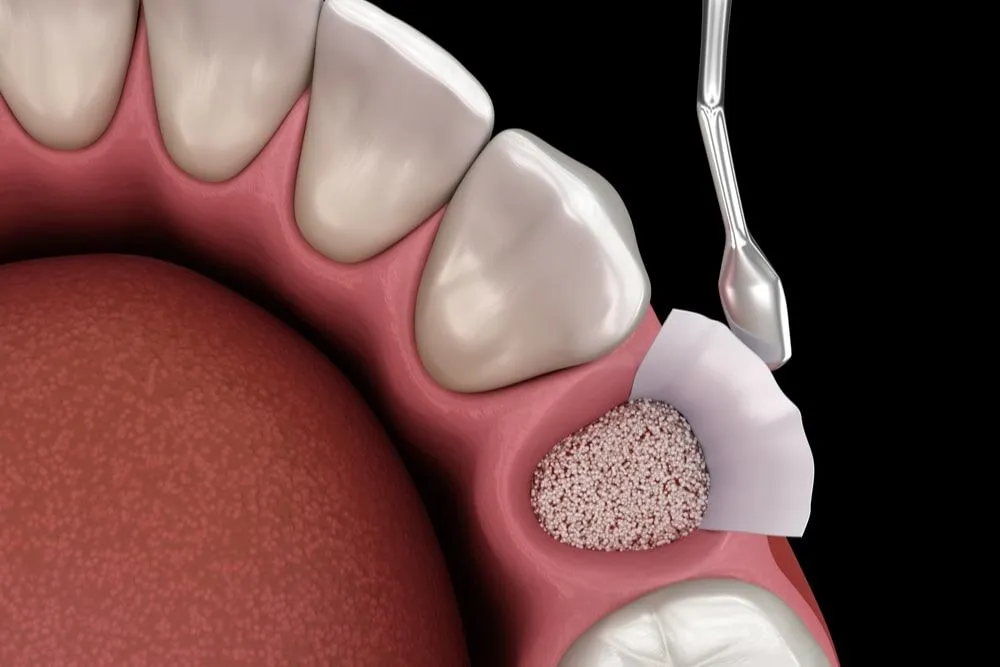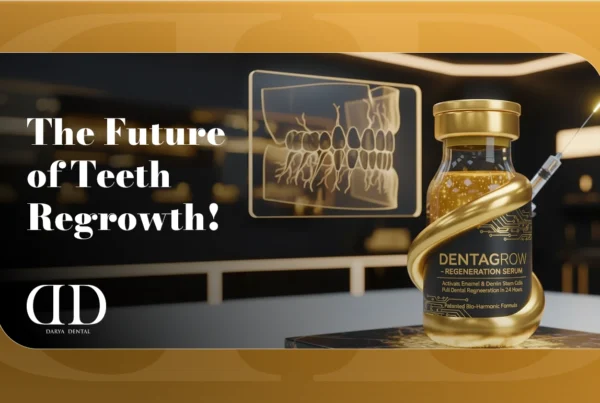Is a Bone Graft Necessary After a Tooth Extraction?
Bone grafts are beneficial when you have a tooth extracted, there is often a need to consider a bone graft to preserve the surrounding bone structure. But is a bone graft really necessary in every case? Let’s dive into the details and explore the ins and outs of this important dental procedure.
The Importance of Bone Preservation After Tooth Extraction
After a tooth is removed, the empty socket in the jawbone begins a natural healing process to fill in the gap. This involves new bone growth filling in the socket over time. However, this natural healing process can sometimes lead to unintended consequences – bone loss and shrinkage of the socket.
Over time, as the bone fills in the empty socket, the surrounding bone structure can start to deteriorate. This is because the tooth root provided stimulation to the bone, keeping it strong and healthy. With the tooth gone, that stimulation is lost, causing the bone to gradually resorb and lose volume.
This bone loss and socket shrinkage can have significant implications, especially if you plan to replace the missing tooth with a dental implant in the future. Dental implants require a sufficient amount of healthy, dense bone to anchor into. If too much bone is lost after an extraction, it may make it difficult or impossible to successfully place an implant.
When is a Bone Graft Necessary?
So when exactly is a bone graft recommended or required after a tooth extraction? There are a few key factors that dentists consider:
Location of the Extracted Tooth: Teeth in the front of the mouth, especially the upper front teeth, tend to have thinner, more delicate bone surrounding them. This anterior bone is more prone to resorption and collapse after an extraction, making a bone graft more likely to be needed.
Condition of the Surrounding Bone: If the extracted tooth had significant bone loss or infection prior to removal, the surrounding bone may already be compromised. In these cases, a bone graft can help preserve what bone remains and prevent further deterioration.
Future Dental Treatment Plans: Perhaps the most important factor is whether you plan to eventually replace the missing tooth. If you intend to get a dental implant to fill the gap, a bone graft is strongly recommended. Implants require a solid, dense foundation of bone to integrate and function properly over the long-term.
In general, dentists tend to recommend bone grafts in the following scenarios:
– Extractions in the front/anterior region of the mouth
– Teeth with pre-existing bone loss or infection
– When planning to replace the missing tooth with a dental implant
Types of Bone Grafts
There are a few different types of bone grafting materials that can be used:
Autogenous Bone Grafts: This involves taking bone from another part of the patient’s own body, usually the chin, jaw, or hip. Autogenous grafts are considered the “gold standard” as they contain the patient’s own living bone cells, promoting the best bone regeneration.
Allogenic Bone Grafts: This utilizes bone that has been harvested from a deceased donor and processed to remove any living cells. Allogenic grafts provide a mineral scaffold for the patient’s own bone cells to grow into.
Xenogenic Bone Grafts: These grafts use bone that has been harvested from an animal source, typically bovine (cow) bone that has been specially treated. Xenografts also provide a mineral framework for new bone growth.
Synthetic Bone Grafts: As an alternative to natural bone, there are also synthetic graft materials made from minerals like calcium phosphate or hydroxyapatite. These man-made grafts mimic the composition of natural bone.
The type of graft material used will depend on factors like the size of the area being grafted, the patient’s preference, and the dentist’s experience and recommendations.
The Bone Graft Procedure
Getting a bone graft after a tooth extraction is typically a straightforward procedure, often performed immediately after the tooth is removed. Here’s a quick overview of what to expect:
1. Tooth Extraction: First, the dentist will carefully remove the tooth, ensuring to preserve as much of the surrounding bone as possible.
2. Bone Graft Placement: Next, the selected bone graft material is carefully packed into the empty tooth socket. Depending on the type of graft, it may be mixed with the patient’s own bone or blood to further enhance bone growth.
3. Sealing the Site: To protect the graft and promote healing, the dentist will typically place a collagen membrane or other barrier over the graft site. This helps keep the graft material in place and guides the bone regeneration process.
4. Suturing: Finally, the dentist will suture the gum tissue closed over the graft site, allowing it to heal undisturbed.
The entire procedure is usually completed in a single visit, though follow-up appointments may be necessary to monitor the healing progress. Most patients report minimal discomfort, with any pain or swelling easily managed with over-the-counter medication.

clinical photographs showing bone graft material being placed into an extraction site by a dental surgeon. The grafting procedure helps maintain jawbone density and prepare for future dental implants
Bone Graft Costs and Insurance Coverage
One of the main concerns patients have about bone grafts is the cost. Understandably, any additional dental procedure adds to the overall expense. The cost of a bone graft can vary widely, ranging from $300 to $3,000 or more, depending on several factors:
– Type of Graft Material Used: Autogenous grafts from the patient’s own bone tend to be the most expensive, while synthetic grafts are often the most affordable.
– Size of the Graft Area: Larger areas requiring more graft material will cost more than smaller grafts.
– Whether it’s Done at the Same Time as Extraction: Combining the extraction and graft in one procedure is generally less expensive than scheduling them separately.
– Geographic Location: Dental costs can vary significantly by region and the dentist’s fees in your area.
It’s important to discuss the estimated costs with your dentist and check with your insurance provider to understand what portion of the bone graft, if any, may be covered. Many dental insurance plans will provide at least partial coverage for bone grafts related to dental implant placement, but the specifics can vary.
Alternatives to Bone Grafts
While bone grafts are often recommended, especially when planning for dental implants, they are not the only option for preserving bone after a tooth extraction. Two less-invasive alternatives include:
1. Socket Preservation: This technique involves placing a bone substitute material or membrane directly into the tooth socket immediately after the extraction. This helps maintain the bone volume and shape of the socket as it heals.
2. Ridge Preservation: Similar to socket preservation, this method also uses a bone graft or collagen membrane to fill the extraction site and prevent significant bone loss.
These options can be effective in many cases, helping to preserve the existing bone structure without the need for a full, separate bone grafting procedure. However, they may not provide the same level of long-term bone preservation as a comprehensive bone graft.
How Long Do Dental Bone Grafts Last?
One of the key benefits of getting a bone graft is that they are designed to be a long-term solution. When performed correctly by an experienced dentist, dental bone grafts can last for many years and provide a stable foundation for future dental work, such as dental implants.
The average lifespan of a successful bone graft is around 5-10 years, though they can potentially last much longer in many cases. Factors that can impact the longevity of a bone graft include:
– The patient’s age and overall health: Younger, healthier patients tend to experience better bone regeneration and graft integration.
– Oral hygiene and lifestyle habits: Good oral hygiene, not smoking, and avoiding other behaviors that can compromise bone health will help extend the lifespan of a graft.
– The type of graft material used: Autogenous grafts containing the patient’s own living bone cells generally integrate the best and last the longest.
It’s important to note that even after 5-10 years, a successful bone graft does not mean the job is done. Ongoing monitoring and maintenance by your dentist is still required to ensure the graft site remains healthy and stable, especially if you have a dental implant placed in that area.
Conclusion
In summary, while a bone graft may not be necessary in every single tooth extraction case, it is often highly recommended – especially if you plan to eventually replace the missing tooth with a dental implant. Bone grafts help preserve the underlying bone structure, maintain the natural contours of the jaw, and create a solid foundation for future dental work.
The decision to get a bone graft should be made in close consultation with your dentist, considering factors like the location of the extracted tooth, the condition of the surrounding bone, and your long-term treatment goals. With the right planning and execution, a bone graft can be a wise investment in the health and stability of your smile for years to come.






